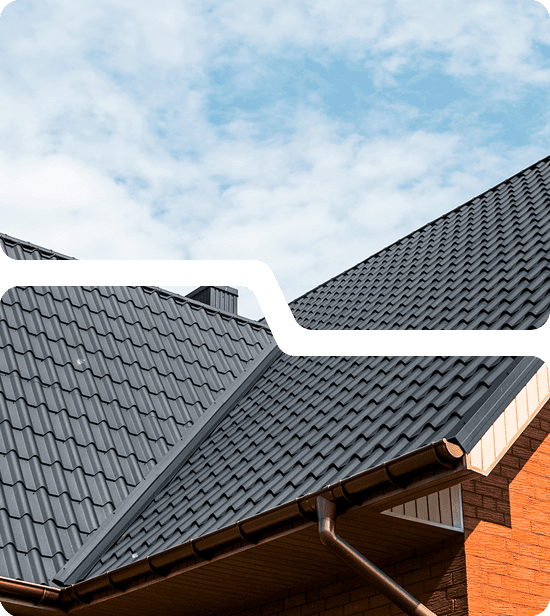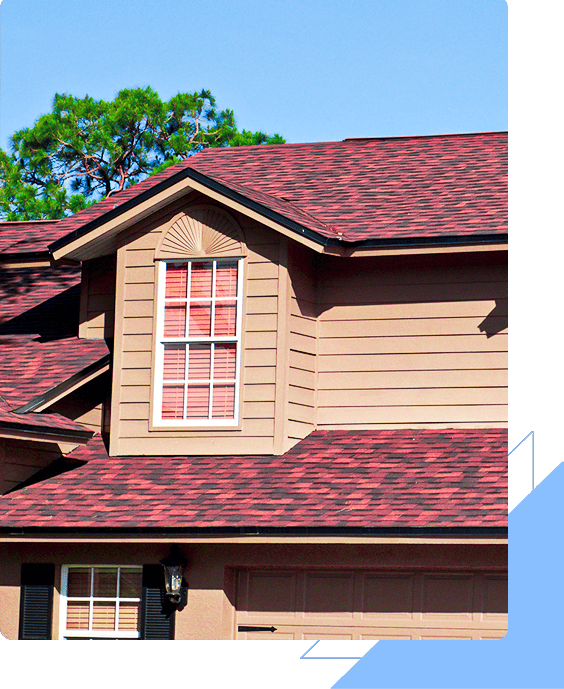Are you constantly grappling with the question, “Do I need roof ventilation?”Well, you’re not alone. Many homeowners find themselves in a conundrum when it comes to proper airflow and attic ventilation needs. Understanding why these aspects are crucial for your home can be quite overwhelming, but we’re here to simplify things for you.
The advantages of having a well-ventilated attic are numerous and impactful. However, improper air circulation also carries its share of drawbacks that can harm your home’s health over time. This article will demystify the various types of home venting systems available and help evaluate your current airflow situation. Plus, we’ll guide you through necessary steps for improving air circulation while considering potential risks.
Understanding the Purpose of Proper Airflow
You’ve gotta understand, proper airflow isn’t just about keeping your attic cool; it’s like the lungs of your home, breathing in fresh air and exhaling moisture. It’s a crucial part of maintaining not only the health of your home but also its energy efficiency. Without proper ventilation, warm moist air can become trapped in your attic leading to a host of problems including mold growth. Mold prevention relies heavily on reducing moisture levels in your home and having an effective ventilation system is key.
The second important aspect to consider is that controlled airflow can significantly boost energy efficiency. When hot air gets trapped inside during summer months, it makes your cooling system work overtime to maintain comfortable temperatures indoors. Conversely, during winter months, without adequate ventilation, warm air from heating systems can get stuck in the attic instead of circulating throughout living spaces which leads to inefficient energy use and higher utility bills. So remember, ensuring good roof ventilation is not just about protecting the structural integrity of your house—it’s also a smart move for optimal energy consumption and savings!
Advantages of a Well-Ventilated Attic

Having a properly aerated loft can offer several key benefits, helping to maintain the integrity of your home while also saving on energy costs. One major advantage is moisture control. Without proper ventilation, hot and humid air can build up in your attic, leading to condensation and potential damage such as mold growth or wood rot. By maintaining good airflow through your attic, you’re effectively mitigating these risks, preserving the healthiness of your home’s structure.
Another significant benefit lies in energy efficiency. A well-ventilated attic maintains a more constant temperature throughout the year. In the summer months, it prevents heat from building up under the roof and seeping down into your living spaces which would cause you to crank up the AC. Similarly, during winter, it stops warm air from accumulating and causing ice dams on your roof’s edge. This balanced temperature reduces strain on your heating and cooling systems – meaning less wear-and-tear over time and lower utility bills for you!
Drawbacks of Improper Air Circulation
Imagine the strain on your energy bills, not to mention the potential damage to your home’s structure, if air isn’t circulating properly. One significant drawback of poor attic ventilation is condensation issues. When warm, moist air from inside your home rises and meets the cooler surface of an under-ventilated attic during winter months, it can lead to excessive dampness. This moisture buildup then results in condensation which can warp or rot your roof’s structural elements over time.
A further problem you’ll encounter with inadequate air circulation is mold growth. Moisture-laden environments are perfect breeding grounds for mold and mildew which pose a serious risk to both your home’s integrity and your health. In addition to causing respiratory problems, these fungi can eat away at wood and insulation materials leading to costly repairs or replacements down the line. So don’t underestimate the importance of proper roof ventilation – it could save you a lot of trouble in the long run!
Common Types of Home Venting Systems
Let’s dive into the world of home venting systems, shall we? They come in all shapes and sizes, each with their unique perks to keep your house fresh and free from pesky dampness. Ventilation equipment options can range from simplistic exhaust fans to more complex ridge or soffit vents. Exhaust fans are often used in kitchens or bathrooms to expel moist air directly outside, while ridge and soffit vents are installed on roofs and eaves respectively for a more comprehensive ventilation solution. These typically work together to create a balanced airflow that draws cool air into the attic through the soffits, pushing hot air out through the ridge vents.
However, it’s crucial to consider the energy efficiency impact when choosing your home venting system. More traditional methods like natural ventilation rely on wind and thermal buoyancy but don’t always provide sufficient airflow during warmer months or in climates where winds are less prevalent. In contrast, mechanical ventilation systems like whole-house fans can offer a high level of control over indoor climate but at an increased energy cost. Therefore, striking a balance between effectiveness and energy usage is key when selecting which type of venting system you’ll implement in your home.
Evaluating Your Current Airflow Situation

Before rushing into any decisions, it’s crucial to assess your home’s current airflow situation. Look at the existing ventilation systems in place and how effectively they are operating. This process involves a bit of investigation on your part but primarily revolves around airflow measurement. You can measure the rate at which air is entering or exiting your attic using various tools or techniques such as anemometers or smoke puffers. These measurements will give you a clear understanding of whether your roof needs more ventilation or if the existing system is adequate.
In addition to measuring airflow, you should also identify any potential ventilation obstacles in your home. For instance, insulation could be blocking soffit vents, reducing their effectiveness. Also, remember that cluttered attics can restrict airflow and create hot spots that affect overall efficiency. In some cases, structural issues like improperly installed roofing materials could hinder proper ventilation too. By evaluating these aspects accurately, you’ll be able to make informed decisions about improving your attic’s ventilation system – ensuring a healthy and comfortable living environment for everyone in your home.
Necessary Steps for Improving Air Circulation
Ready to take action and enhance your home’s air circulation? It all begins with proper ventilation maintenance. Keeping your vents clean and unclogged is vital for ensuring optimal airflow through your attic. This means regularly removing any debris, such as leaves or dust that might hinder the movement of air. Also, check if there are any signs of mold or dampness around your vents; these could indicate a lack of sufficient ventilation.
Next, focus on improving ductwork efficiency. Your ductwork plays a significant role in circulating air throughout your house, including the attic. If it’s not functioning properly due to leaks or poor insulation, you could be losing valuable heated or cooled air from your HVAC system before it even reaches its destination. So make sure to have them inspected and sealed if necessary. Further, consider adding more insulation around the ducts in colder areas to prevent heat loss during winter months. These steps will significantly improve the overall air circulation in your home while also saving energy costs.
Potential Risks and Considerations
Having considered the necessary steps for improving air circulation in your attic, it’s important to also understand the potential risks and considerations associated with roof ventilation. Your decision shouldn’t only hinge on ways to keep your home cool or warm as per the season, but should also factor in elements like mold prevention and energy efficiency.
Neglecting proper roof ventilation can lead to an array of problems, one of which is mold growth. Mold thrives in damp environments where there’s little airflow. Without adequate roof ventilation, moisture from everyday activities like cooking and showering can get trapped within your home, providing a perfect breeding ground for mold spores. This not only damages your property but could lead to serious health issues too. Additionally, a well-ventilated attic contributes significantly towards energy efficiency. During summer months, heat builds up in an unventilated attic causing your AC system to work harder than necessary – this increases energy consumption and expenses. Conversely, in winter, a poorly ventilated attic can cause ice dams on your roof which may result in costly damages. Thus understanding these risks will help you appreciate why proper ventilation isn’t just about maintaining comfortable temperatures; it’s a critical aspect of home maintenance.
Conclusion
So, you’ve got all the facts now. A well-ventilated attic isn’t just a good-to-have, it’s a must for your home’s overall health. Remember, ignoring the signs of improper airflow could lead to some serious issues down the line.
Don’t wait until it’s too late. Take time to evaluate your current ventilation system and make necessary improvements. Keep in mind the potential risks and always consider professional guidance if you’re unsure about anything.

